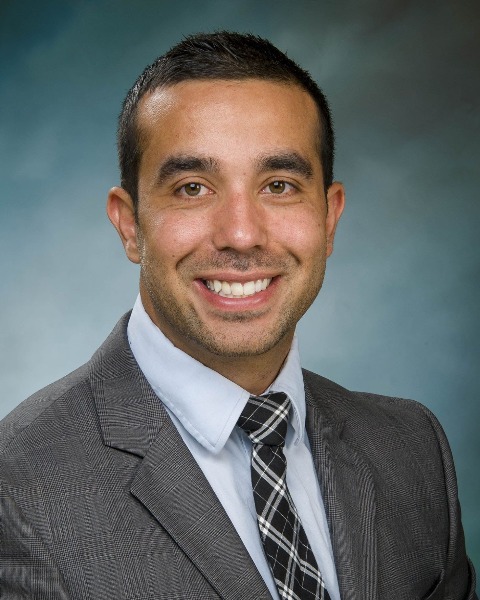On-Demand Oral
Perioperative Physiological Parameters Associated with Severe Acute Kidney Injury after Pediatric Heart Transplant
On-demand
Background: Acute kidney injury (AKI), a common complication of pediatric heart transplant (HT), is associated with increased morbidity and mortality. The perioperative hemodynamic alterations associated with postoperative AKI are not well studied in children. The evaluation of high-fidelity, continuous hemodynamic monitoring data in the intensive care unit (ICU) allows for improved characterization of potentially modifiable physiologic variables associated with postoperative AKI. The primary objective of this study was to evaluate the association between perioperative clinical variables and post-operative hemodynamic indices available in the first 12 hours after surgery with development of severe AKI after pediatric HT.
Methods: We performed a retrospective study of all patients who underwent HT at a single, quaternary care pediatric institution between 1/2016-11/2019. Perioperative variables as well as hemodynamic indices within the first 12 hours post HT were collected as candidate predictors of outcome. We planned to investigate postoperative continuous pulse pressure variation (PPV), and thus those extubated <12 hours of ICU admission (n=3), with an open sternum (n=18), or on ECMO support before exiting the OR (n=5) were excluded due to associated physiologic effects on PPV. The primary outcome was development of severe AKI, defined as Kidney Disease Improving Global Outcomes (KDIGO) stage 2 or higher, within 12 to 72 hours post-transplant. Univariate and stepwise multivariate associations between the candidate predictors and outcome were evaluated. For PPV, which is collected continuously, time spent above varying discriminating thresholds of variation were evaluated both as a continuous variable (e.g. cumulative time spent above 10% of variation) as well as categorical with use of ROC curve for optimal split, in association with the outcome.
Results: Of 94 patients status post HT, 73 met inclusion/exclusion criteria. Median age at HT was 7 years (range 1 month - 23 years). Thirty-three (45%) patients developed severe AKI between 12 and 72h post HT. By univariate analysis, non-Hispanic Black race, preoperative AKI, longer cardiopulmonary bypass (CPB) duration, lower weight, and peak lactate were associated with severe AKI (Table). CVP was noted to have a quadratic relationship, rather than linear, with the outcome. Though the time spent above 18% and 20% thresholds of PPV were significantly associated with the outcome, these values equated to non-contiguous 10 minutes of high variation over a 12-hour period, and thus were not clinically significant. By multivariate analysis, non-Hispanic Black race, longer CPB duration, and higher CVP remained associated with development of severe AKI (c: 0.84, 95% CI 0.73-0.92).
Conclusions: Severe AKI is common after pediatric heart transplantation. Non-Hispanic Black race and longer CPB time were independently associated with severe AKI. Higher CVP was the only hemodynamic predictor associated with severe AKI.
Methods: We performed a retrospective study of all patients who underwent HT at a single, quaternary care pediatric institution between 1/2016-11/2019. Perioperative variables as well as hemodynamic indices within the first 12 hours post HT were collected as candidate predictors of outcome. We planned to investigate postoperative continuous pulse pressure variation (PPV), and thus those extubated <12 hours of ICU admission (n=3), with an open sternum (n=18), or on ECMO support before exiting the OR (n=5) were excluded due to associated physiologic effects on PPV. The primary outcome was development of severe AKI, defined as Kidney Disease Improving Global Outcomes (KDIGO) stage 2 or higher, within 12 to 72 hours post-transplant. Univariate and stepwise multivariate associations between the candidate predictors and outcome were evaluated. For PPV, which is collected continuously, time spent above varying discriminating thresholds of variation were evaluated both as a continuous variable (e.g. cumulative time spent above 10% of variation) as well as categorical with use of ROC curve for optimal split, in association with the outcome.
Results: Of 94 patients status post HT, 73 met inclusion/exclusion criteria. Median age at HT was 7 years (range 1 month - 23 years). Thirty-three (45%) patients developed severe AKI between 12 and 72h post HT. By univariate analysis, non-Hispanic Black race, preoperative AKI, longer cardiopulmonary bypass (CPB) duration, lower weight, and peak lactate were associated with severe AKI (Table). CVP was noted to have a quadratic relationship, rather than linear, with the outcome. Though the time spent above 18% and 20% thresholds of PPV were significantly associated with the outcome, these values equated to non-contiguous 10 minutes of high variation over a 12-hour period, and thus were not clinically significant. By multivariate analysis, non-Hispanic Black race, longer CPB duration, and higher CVP remained associated with development of severe AKI (c: 0.84, 95% CI 0.73-0.92).
Conclusions: Severe AKI is common after pediatric heart transplantation. Non-Hispanic Black race and longer CPB time were independently associated with severe AKI. Higher CVP was the only hemodynamic predictor associated with severe AKI.

Alexander Alali, MD
Fellow
Division of Pediatric Cardiology / Texas Children's Hospital / Baylor College of Medicine
Houston, Texas
